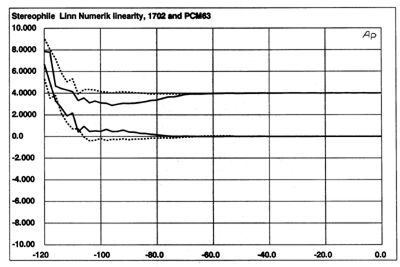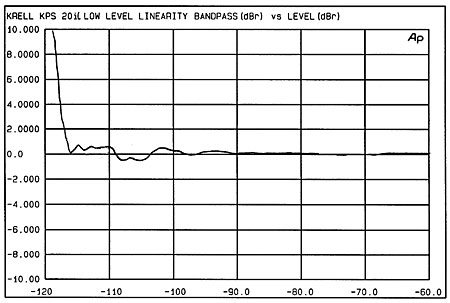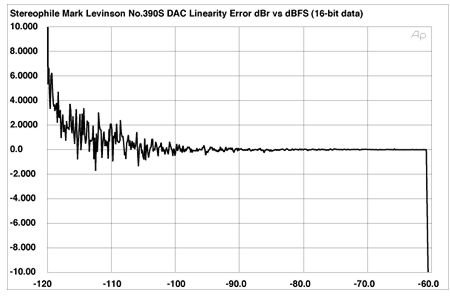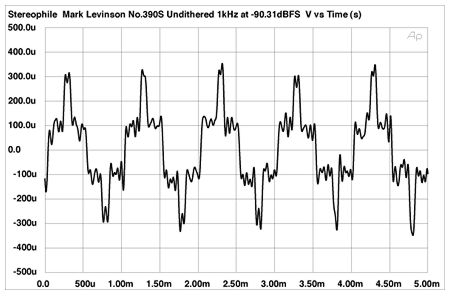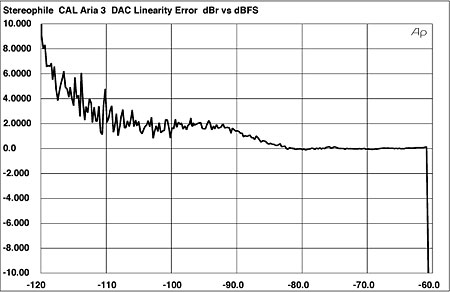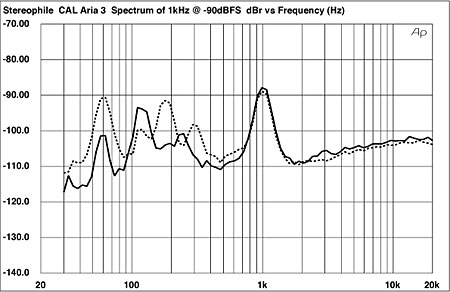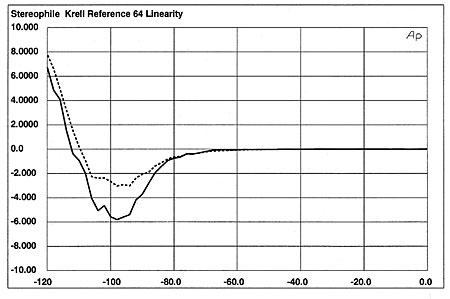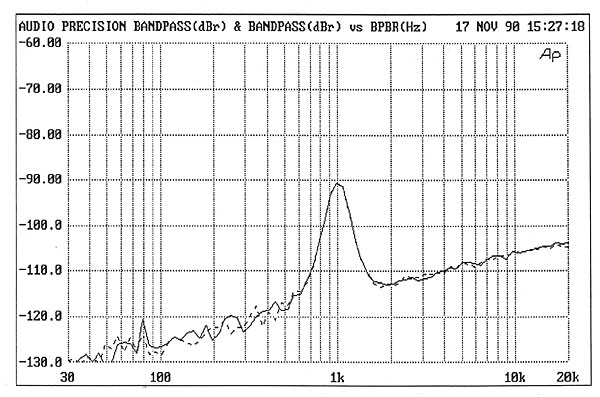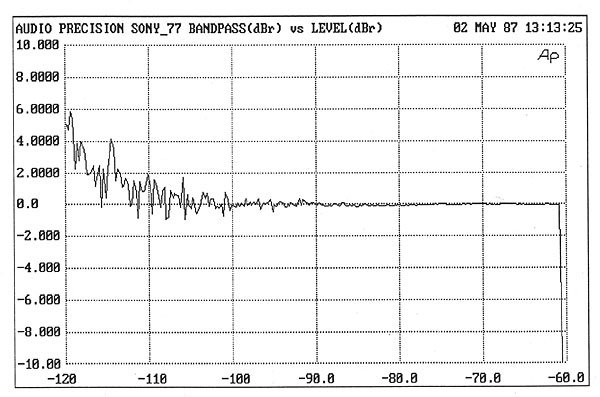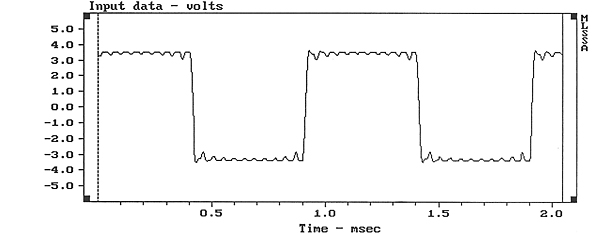Uh...
I dunno? My general assumption would be 1 kHz dithered fade, seems a bit hard to get down to -120 dB on 16-bit material otherwise. And they had an Audio Precision something or other (System One I guess) going.
Happen to know any with linearity results available online? I'm having a really hard time finding any that the folks at
Stereophile would have tested. Had no luck with models from Burmester, Carver, Denon, Pioneer and Onkyo picked from Vasiltech's list.
Here's a bit of an exotic one finally:
https://www.stereophile.com/content/california-audio-laboratories-aria-mkiii-cd-player-measurements
I don't buy their explanation, given that the -90.31 dBFS tone
does seem to be slightly louder than it should be. Decently clean though. Guess this one could use some trimming.
Had no luck with Krell either, just one model with PCM64:
https://www.stereophile.com/content/krell-reference-64-digital-processor-measurements
A Sony CDP-X77ES can do it of course, but that's boring delta-sigma (well, not so much at the time).
https://www.stereophile.com/content/sony-cdp-x77es-cd-player-measurements
Of course the
CDP-X779ES was first-rate in all respects, too. The older
CDP-X555ES was generally good but clearly unhappy with the full-scale square wave which I assume made the digital filter overflow - so clearly not an intersample-over king, this one:
Ha. I was already suspecting that these slightly older (pre-xx9) models had some issues in this regard, they have a somewhat mixed reputation. That might mean that
everything with a CXD1244 filter is a bust.

(Unless, of course, you can turn down the volume, which I didn't check - it's a feature on some players. The chip itself does have selectable digital attenuation. If RM-D991 is in fact the correct remote, there's buttons on there as well.) In the Philips camp, even the oldest filters will cope fine.
Speaking of Sony, I guess there isn't anything resembling a datasheet for the CXD2562 DAC? The '90s seem to be filled with proprietary, undocumented ICs in Japanese players.

Still missing some NPC filters, too - I have 5803 - 07 - 13 - 40 - 41 - 47 (no 18, 45, nothing A/D side). Nothing for any DAC pre-SM5864 either, only a block diagram for the SM5861.
I did find another goodie in
Stereophile 08-1990: Stax DAC-X1t with UltraAnalog D20400 20-bit DAC modules (wonder how many are still working these days, these don't seem to have been overly reliable?). "This is the best linearity performance I have measured." Well, for $12,000(US) in 1990 money, it better be. Basically looks like the Sony X77ES above. The D20400 is neat, I found both the datasheet and an article.
The same issue also contains the
Theta DSPro Basic (2x AD1860), another good performer with just some slight positive deviation around -90/-100 dB, and a tad more affordable at $2000. The
Wadia X-32 also makes an appearance, but this complex beast with its DSP prowess and staggered DACs for a high effective oversampling ratio is not overly outstanding in the linearity department and features a slow rolloff filter.
The Esoteric D-2 is in
10-1990. Again superb linearity (4 x PCM1701P-K - I don't think I have a datasheet for this one either). And again the 1 kHz square wave looks chopped off...
*checks list* Wouldn't you know it, it's the bloomin' CXD1244 again. So my theory is confirmed - bummer, that's a good filter. I mean, as long as you're giving it a bit of attenuation I assume it'll be fine, the feature just has to be made available to the user. I checked the D-2 manual, it's on the remote. As it appears to be with the CDP-X55ES.
Phew. Disaster averted, just make sure you turn down loudness war era material a bit.
Say, you wouldn't have a test CD with a 1 kHz 0 dBFS square wave and some players sporting the older CDX1144 and CDX1088 filters floating around...?

